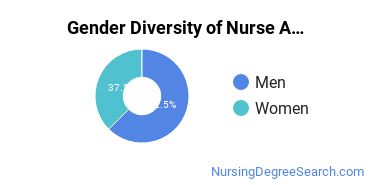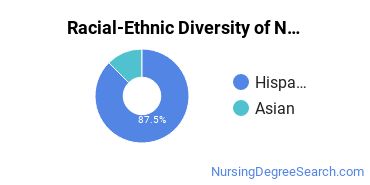Nurse Anesthetist at University of Puerto Rico - Medical Sciences
What traits are you looking for in a nurse anesthetist school? To help you decide if University of Puerto Rico - Medical Sciences is right for you, we've gathered the following information about the school's nurse anesthetist program.UPR Medical Sciences is located in San Juan, Puerto Rico and has a total student population of 2,218.
Want to know more about the career opportunities in this field? Check out the Careers in Nurse Anesthetist section at the bottom of this page.
UPR Medical Sciences Nurse Anesthetist Degrees Available
- Master’s Degree in Nurse Anesthetist
UPR Medical Sciences Nurse Anesthetist Rankings
Nurse Anesthetist Student Demographics at UPR Medical Sciences
Take a look at the following statistics related to the make-up of the nurse anesthetist majors at University of Puerto Rico - Medical Sciences.
UPR Medical Sciences Nurse Anesthetist Master’s Program

In the nurse anesthetist master's program at this school, racial-ethnic minorities make up 100% of degree recipients. That is 70% better than the national average.*
The following table and chart show the race/ethnicity for students who recently graduated from University of Puerto Rico - Medical Sciences with a master's in nurse anesthetist.

| Race/Ethnicity | Number of Students |
|---|---|
| Asian | 0 |
| Black or African American | 0 |
| Hispanic or Latino | 8 |
| White | 0 |
| International Students | 0 |
| Other Races/Ethnicities | 0 |
Related Majors
Careers That Nurse Anesthetist Grads May Go Into
A degree in nurse anesthetist can lead to the following careers. Since job numbers and average salaries can vary by geographic location, we have only included the numbers for PR, the home state for University of Puerto Rico - Medical Sciences.
| Occupation | Jobs in PR | Average Salary in PR |
|---|
References
*The racial-ethnic minorities count is calculated by taking the total number of students and subtracting white students, international students, and students whose race/ethnicity was unknown. This number is then divided by the total number of students at the school to obtain the racial-ethnic minorities percentage.
- College Factual
- National Center for Education Statistics
- O*NET Online
- Image Credit: By Roca Ruiz under License
More about our data sources and methodologies.
